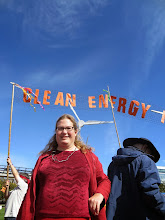A proposed community solar farm for the Bega Valley on the south coast of New South Wales, is being looked at by the local council.
Clean Energy for Eternity (CEFE) has put forward the solar farm proposal for construction at the Tathra Sewage Treatment Plant, in the town of Tathra.
Read more:
http://www.energybusinessnews.com.au/energy/solar/community-solar-farm-proposed-for-bega-valley/
Joy Hughes
in community service
Solar Gardens Institute http://www.solargardens.org
(719)207-3097 direct
- Thursday, October 17, 2013
- California Endowment Conference Center
- 1111 Broadway, 7th Floor, Oakland CA
The Local Clean Energy Alliance is presenting the fourth annual Clean Power, Healthy Communities Conference, promoting local clean energy economies to ensure the economic development, employment, health, and resilience of Bay Area communities.
In recent years many initiatives have emerged to promote decentralized clean energy. These initiatives support energy efficiency (Regional Energy Networks), feed-in tariffs, shared renewables, intelligent grid architectures, and innovative financing and repayment mechanisms, to name a few.
Governor Brown’s call for 12,000 megawatts of local renewable power in California by 2020 has garnered widespread support. However, there continue to be few programs at the state level for implementing a decentralized energy vision. Many communities are looking to local leadership in energy procurement as a driver for decentralized energy development and equitable, sustainable energy solutions.
At the heart of the matter is energy democracy: who controls energy development and for whose benefit. To democratize energy decisions, communities and grassroots organizations need to play an increasingly decisive role.
The San Francisco Bay Area, with its strong advocacy organizations and many renewable energy programs, has provided leadership for local clean energy development on many fronts, including the promotion of Community Choice energy.
The fourth annual Clean Power, Healthy Communities conference convenes advocates, policy makers, financiers, and entrepreneurs who support clean energy and healthy communities in the Bay Area. The conference focuses on finding solutions to the political and financial challenges of developing community-based energy resources and building sustainable, equitable, resilient communities.
- What’s at Stake for Bay Area Communities?
- Bay Area Energy Initiatives
- Overcoming Political and Financial Obstacles
“It has been some time since I have participated in a conference/meeting as relevant and as purposeful... I was completely amazed at the high level of enthusiasm and interest in clean energy, local power, environmental justice and empowerment of local communities.”
Pedro Rosado,
District Representative,
Office of Senator Loni Hancock
|






